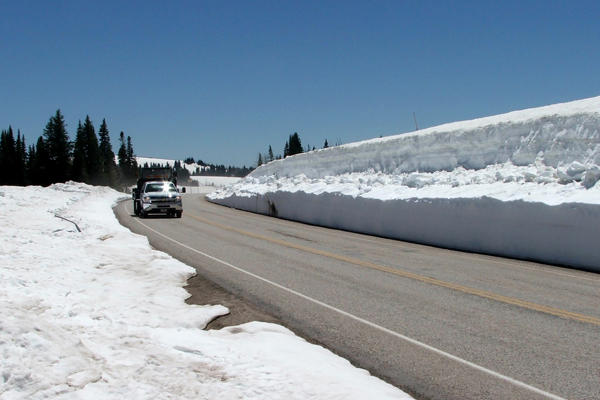Diesel drivers everywhere are thankful that diesels have become easier to start in cold weather. Most turn over within 1.5 seconds of turning on the ignition.
Metal cylinder walls become very cold when the temperature drops, so most vehicles are harder to start in cold weather. Because diesel engines require much higher temperatures to fire the fuel, they've always been harder to start in cold weather than gasoline-powered vehicles. To warm things up before the engine can run, a variety of heaters have been developed that keep various parts of the vehicle warm and snuggly even when it isn't being driven. Some of these gadgets may be on the vehicle when you buy it; others you can buy and install later on if the need for them arises.
Tip: If you're planning to buy a diesel, be sure to ask which heating devices are included in the purchase price. If you live in a cold climate or do much traveling, consider having several devices available for extreme weather conditions. The following sections describe some of your options.
Block Heaters
Many diesels come equipped with built-in electric-powered block heaters to keep the engine block warm overnight. You just park the vehicle, plug the heater cord into a heavy-duty three-pronged extension cord, and then plug the extension cord into a 110-volt electrical socket that can handle a threepronged plug. When shopping, don't skimp on the length of the extension cord — it can be 50 feet to a socket from a motel parking lot! I've been told that in Alaska, where a block heater is vital, electrical outlets are built right into some parking meters. I doubt that anyone tries to beat those meters,especially at –40°F!
If your vehicle doesn't have a block heater, you can buy one and have it installed. Various types are available, but immersion-type heaters are the most popular.
Caution: When buying a heater, consult the charts at an auto parts store or dealership to match the wattage of the heater to the size of your engine and the range of weather you expect to encounter. When plugged in, a high-wattage heater will run up your electric bills unnecessarily if you have a small engine or don't expect the temperature to go below zero very often.
Battery Warmers
If your diesel doesn't start in cold weather and you remembered to plug in the block heater, your battery may be the culprit. Batteries can lose 35 percent of their power at 32°F and as much as 60 percent at 0°F. Because the battery has to supply the glow plugs with sufficient juice to get things warmed up (refer to the earlier section, "What Makes It Go?"), a frostbitten battery isn't of much use on an icy morning.
Tip: This problem has two remedies: You can buy a battery with greater capacity (providing that there's room for one under the hood), or you can buy a battery warmer. The two most popular models, both of which simply plug into a nearby 110-volt socket, are
- The "hot plate" warmer, which simply slides under the battery like a cookie sheet and warms its little toesies.
- The "electric blanket" warmer, which wraps around the battery and uses more current than the hot plate version to deal with really frigid situations.
Oil Warmers
You can buy a heated dipstick to heat the oil in the engine crankcase (you just trade it for your normal dipstick and plug it into an electrical outlet) and a host of other gadgets to warm the coolant in the engine and the fuel in the fuel lines. (Most people don't need all this stuff, but for my readers in Alaska,Canada, and other cold climates, I want to cover the subject thoroughly.)
Tip: Here's a handy hint that may work in a pinch: On a day when your block heater isn't able to combat the cold effectively, if you have an electric hair dryer and a long enough extension cord to get it to the vehicle, try turning the dryer on and putting the nozzle into the car's air inlet duct. The warmair should help your engine warm up faster.
What Not to do on a Frosty Morning
Cuation: Never use engine-starting fluids to start your engine — no matter how eager you are to get underway. The ether in these fluids can ignite at such low temperatures that you risk a fire or an explosion, either of which can mean severe damage to both yourself and your precious diesel. Although the containers carry instructions, measuring the "safe" proportions required is just too hard. If you feel that you must use this stuff, I suggest that you have a starting-fluid injection kit installed instead; it's safe and effective. Just stay away from those spray cans!
From Auto Repair for Dummies, copyright © 2009 by Wiley Publishing, Inc., Indianapolis, Indiana. Used by arrangement with John Wiley & Sons, Inc.










